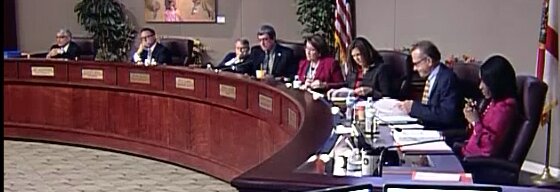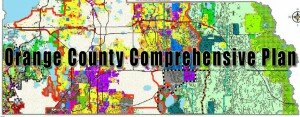This article was in the Orlando Sentinel today talking about the traffic problems in East Orange County. It as some great information on what Commissioner Edwards has to say as well as Renzo Nastasi, the Orange County traffic manager.
David Breen is the reporter at the Sentinel that wrote the article.
East Orange asks for gridlock help
When R.J. Mueller moved to east Orange County in 1993, his neighborhood was surrounded by fields.
Now it’s surrounded by cars.
And gridlock.
“This was country — I mean, real country,” he says of the area along McCulloch Road, just outside the UCF campus. “And I don’t mind the development. Except for this.”
“This” is the twice-daily deluge of traffic that brings the area to a screeching halt.
Mueller appeared earlier this month at a County Commission meeting, showing commissioners video of a recent morning rush hour.
The video showed drivers merging into an unending stream of traffic in a slow-motion free-for all, making up their own rules of the road on the fly.
Mueller blames what he calls a “perfect storm” of thousands of new homes, UCF’s explosive expansion and the fact that transportation money has historically flowed to the urban core of the county rather than to the east.
Commissioner Ted Edwards, who calls the traffic “absolutely horrific,” is asking his colleagues for money to speed up improvements.
Earlier this month he wrote a memo to Mayor Teresa Jacobs and the County Commission noting that “for many years, East Orange County has suffered from a lack of investment in its transportation infrastructure.”
Edwards is seeking options, such as issuing bonds or increasing sales tax, to address the east side’s traffic woes. A ballot initiative would be needed to approve any increase in sales tax.
In addition to growth and years of being a low funding priority, Edwards points to geography as a contributing factor.
“A major problem is that the Econ River serves as a natural barrier to east-west movement, so that forces you to [S.R.] 50,” Edwards said. “Essentially, you have 50 or you have McCulloch Road — that’s the only east-west movement in that part of the county.”
It won’t always be this way, said county transportation planning manager Renzo Nastasi. Design and engineering work are under way on what’s known as the Richard Crotty Parkway. It will run just north of S.R. 50 from Semoran Boulevard to Dean Road, adding a third east-west option to the area.
But that road, Nastasi said, is five to seven years from opening.
In the nearer term, S.R. 50 is being widened to six lanes by FDOT from State Road 436 to Avalon Park Boulevard. There are also plans — but no money yet — to continue the six-laning as far east as S.R. 520.
Nastasi said improvements, such as new signals and turn lanes, have either been completed or are in the works for a number of east-side intersections.
“While we may not be able to go out and widen all the roads in east Orange County, we can still manage the traffic through some of these major intersection improvements,” he said. “And frankly that’s where a lot of the bottlenecks are, at these intersections.”
Nastasi said the area’s traffic woes have been exacerbated by the economic downturn and changes in state law.
He points out that impact fees, the primary funding source for road improvements, have fallen from about $35 million to $40 million a year at the height of the housing boom to about $10 million today. In addition, the state Legislature in 2011 did away with what’s known as “transportation concurrency.”
Under the old law, “we could stop a development from proceeding if the road wasn’t able to absorb the impact of that particular development,” Nastasi said.
Now, a developer doesn’t have to account for pre-existing road deficiencies — only for the additional traffic caused by its projects.
“That’s limited our ability to have a bigger hammer in terms of development,” Nastasi said.
That leaves the County Commission in a bind when it comes to future development projects. While fierce resident opposition has caused some developers to back off on east-side plans, Edwards said, “we’re not supposed to turn down projects due to existing traffic problems that aren’t created by that project.”
For Mueller and his neighbors, the daily traffic grind isn’t going away anytime soon. But he’s hopeful that the problem is finally getting the attention it deserves.
“I don’t think there’s any short-term fix to this,” he said, pointing at the thickening traffic rolling by. “But we have to start somewhere.”
or 407-420-5189
Please follow and like us:




